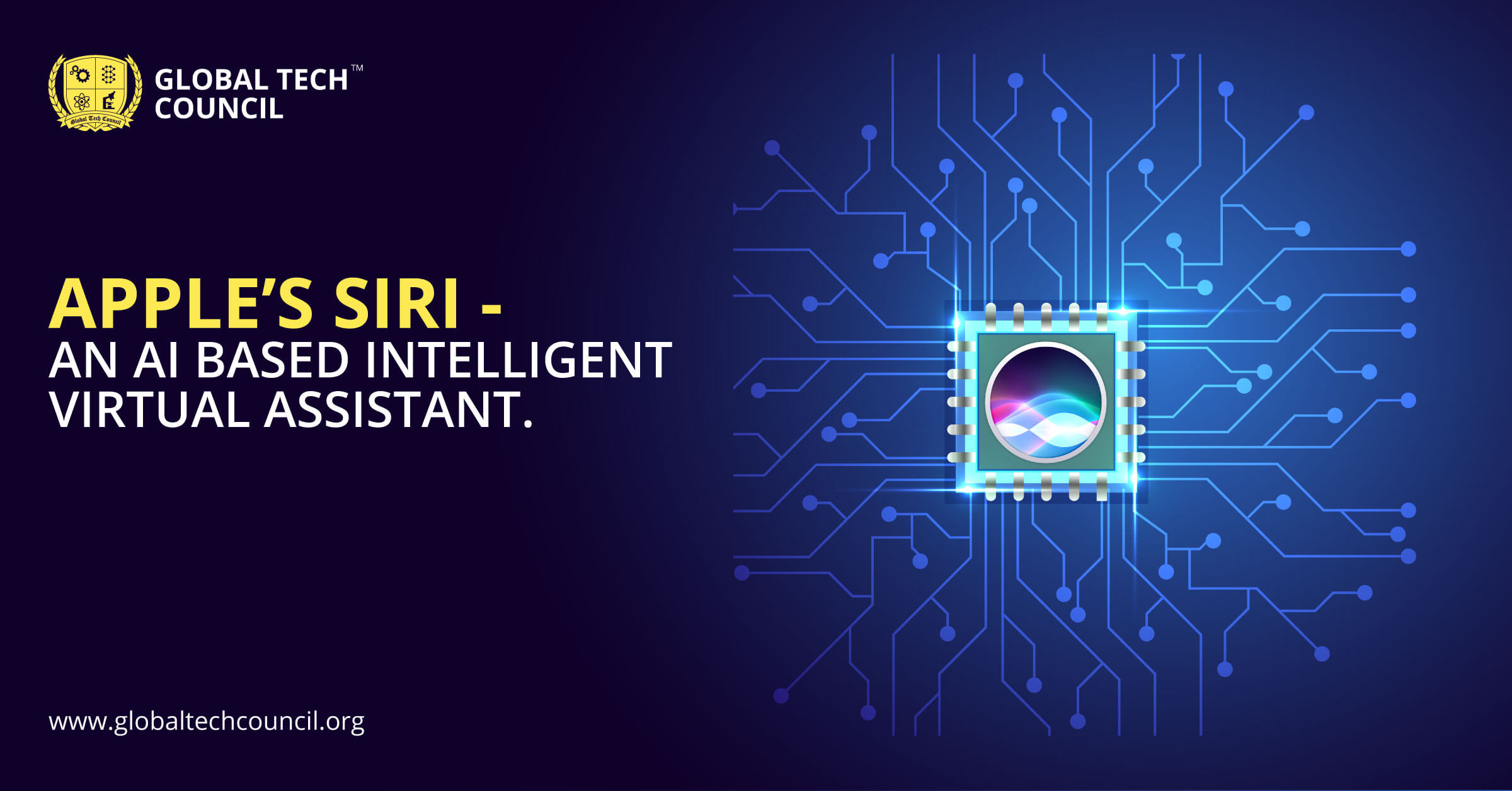Siri, Apple’s ubiquitous virtual assistant, has become an integral part of our digital lives. With its ability to answer questions, set reminders, and even control smart home devices, Siri seamlessly integrates into our daily routines. But the question remains: is Siri truly an example of artificial intelligence (AI)?
This exploration delves into Siri’s capabilities, the definition of AI, and the debate surrounding its classification as an intelligent system.
Examining Siri’s functionalities, from its natural language processing prowess to its ability to learn and adapt, provides a glimpse into the complexities of AI. By comparing Siri’s capabilities to other AI systems and analyzing the role of human intervention in its operation, we gain a deeper understanding of the nuances surrounding the definition of AI.
Siri’s Capabilities
Siri is Apple’s virtual assistant, designed to interact with users through voice commands and natural language processing. Siri’s primary goal is to provide a seamless and intuitive user experience by responding to requests and completing tasks.
User Interaction
Siri interacts with users through voice commands and text input. When a user speaks to Siri, the system uses speech recognition to convert the spoken words into text. This text is then processed by Siri’s natural language processing (NLP) engine, which attempts to understand the user’s intent and context.
Based on this understanding, Siri responds to the user’s request either verbally, through text, or by performing an action.
Language Processing
Siri’s language processing abilities are a key aspect of its functionality. Siri uses advanced NLP techniques to analyze the structure and meaning of user input. This includes tasks such as:
- Tokenization:Breaking down sentences into individual words or units.
- Part-of-speech tagging:Identifying the grammatical role of each word (e.g., noun, verb, adjective).
- Named entity recognition:Identifying and classifying named entities (e.g., people, places, organizations).
- Dependency parsing:Analyzing the grammatical relationships between words in a sentence.
- Semantic analysis:Understanding the meaning of the sentence and its underlying intent.
Tasks Siri Can Perform
Siri can perform a wide range of tasks, including:
- Making phone calls and sending messages:Siri can dial phone numbers, send text messages, and even create and send emails.
- Setting reminders and alarms:Siri can set reminders for specific events or tasks and set alarms for specific times.
- Playing music and podcasts:Siri can play music from Apple Music, Spotify, and other streaming services, as well as podcasts.
- Getting directions and navigation:Siri can provide directions and navigation assistance using Apple Maps.
- Searching the web and apps:Siri can search the internet, as well as specific apps on your device.
- Controlling smart home devices:Siri can control compatible smart home devices, such as lights, thermostats, and security systems.
- Making appointments and reservations:Siri can help you schedule appointments and make reservations for restaurants, hotels, and other services.
Limitations of Siri’s Understanding
While Siri has advanced language processing capabilities, it still has limitations in understanding and executing complex tasks. Some of the challenges include:
- Ambiguity and context:Siri may struggle to interpret ambiguous language or understand the context of a request, especially when it involves multiple steps or complex logic.
- Uncommon phrases and idioms:Siri may not recognize or understand uncommon phrases, idioms, or slang terms.
- Domain-specific knowledge:Siri may have limited knowledge in certain domains, such as technical fields or specialized industries.
- Handling emotions and nuances:Siri is still under development in terms of understanding and responding to human emotions and subtle nuances in language.
Artificial Intelligence Definition

Artificial intelligence (AI) is a branch of computer science that aims to create intelligent agents, which are systems that can reason, learn, and act autonomously. These agents are designed to mimic human cognitive abilities, such as problem-solving, decision-making, and language understanding.AI systems are built upon the principles of machine learning, which enables them to learn from data and improve their performance over time.
The goal of AI research is to develop intelligent machines that can assist humans in various tasks, enhance productivity, and solve complex problems.
Types of AI
The field of AI is categorized into different types based on their capabilities and limitations.
- Narrow AI (Weak AI): This type of AI is designed to perform specific tasks and is often referred to as “weak AI.” Narrow AI systems are trained on a specific dataset and excel in their designated tasks, but lack the ability to generalize to other domains.Examples include image recognition software, spam filters, and virtual assistants like Siri.
- General AI (Strong AI): General AI aims to create systems with human-level intelligence, capable of performing any intellectual task that a human can. This type of AI is still under development and faces significant challenges, as it requires a deeper understanding of human cognition and the ability to learn and adapt in a wide range of contexts.
- Super AI: Super AI refers to hypothetical AI systems that surpass human intelligence in all aspects. These systems would possess cognitive abilities beyond human comprehension, potentially leading to profound changes in society and the future of humanity.
Machine Learning
Machine learning is a key component of AI development, enabling systems to learn from data without explicit programming. It involves algorithms that can identify patterns, make predictions, and improve their performance over time.
- Supervised Learning: This approach involves training a model on labeled data, where each input is associated with a known output. The model learns to map inputs to outputs based on the provided examples.
- Unsupervised Learning: In this approach, the model is trained on unlabeled data and learns to identify patterns and relationships within the data itself. This allows the model to discover hidden structures and insights.
- Reinforcement Learning: This approach involves training an agent to learn through trial and error. The agent receives rewards for performing desired actions and penalties for undesirable actions, enabling it to learn optimal strategies.
Siri’s AI Features

Siri, Apple’s virtual assistant, leverages various AI technologies to provide a seamless and personalized user experience. The core of Siri’s intelligence lies in its ability to understand natural language, learn from user interactions, and adapt its responses accordingly.
Natural Language Processing (NLP)
Natural language processing (NLP) is a critical component of Siri’s functionality. NLP enables Siri to understand and interpret human language, allowing it to process user requests and provide meaningful responses.
Siri uses NLP to analyze the structure, meaning, and intent behind a user’s spoken or written query.
This involves breaking down sentences into individual words, identifying grammatical relationships, and recognizing the context of the request. NLP allows Siri to handle a wide range of tasks, from setting reminders and playing music to providing information and making calls.
Machine Learning (ML)
Machine learning (ML) plays a crucial role in Siri’s ability to learn and adapt over time. Through ML algorithms, Siri analyzes user data and patterns to improve its accuracy and personalization.
Siri utilizes ML to learn from user interactions, preferences, and habits, tailoring its responses and suggestions to individual users.
For instance, if a user frequently asks Siri for directions to a specific location, Siri will learn this preference and offer those directions proactively. Similarly, if a user consistently listens to a particular genre of music, Siri will suggest similar artists and tracks.
Examples of Siri’s Adaptation and Learning
- Personalized Recommendations:Based on past interactions, Siri can suggest relevant apps, music, or news articles tailored to the user’s interests. For example, if a user frequently listens to podcasts about technology, Siri might recommend new technology podcasts or articles.
- Contextual Understanding:Siri can understand the context of a conversation and provide relevant responses. For instance, if a user asks “What’s the weather like today?” followed by “And tomorrow?”, Siri will understand that the second question relates to the weather forecast for the next day.
- Predictive Text:Siri uses ML to predict the next word in a sentence, making it easier for users to type messages or search queries. This feature becomes more accurate over time as Siri learns the user’s writing style and vocabulary.
The Debate

The question of whether Siri qualifies as true artificial intelligence (AI) is a subject of ongoing debate. While Siri exhibits sophisticated capabilities, its classification as AI remains contested due to its reliance on pre-programmed responses and limited ability for independent learning.
Arguments for Siri as AI
Siri’s capabilities, such as natural language processing, voice recognition, and the ability to access and process information from various sources, align with certain aspects of AI.
- Siri’s capacity to understand and respond to human language, even in complex and nuanced ways, suggests a level of intelligence.
- Its ability to learn from user interactions and adapt its responses over time indicates a degree of self-improvement, a hallmark of AI systems.
- Siri’s integration with various services and devices, enabling it to perform tasks and provide information across different platforms, demonstrates a degree of autonomy and intelligence.
Arguments Against Siri as AI
Despite its impressive features, Siri’s limitations raise questions about its true AI status.
- Siri’s responses are often based on pre-programmed algorithms and data sets, rather than true understanding or independent reasoning. This reliance on predefined rules limits its ability to adapt to novel situations or engage in truly creative problem-solving.
- Siri’s learning capabilities are primarily focused on improving its accuracy and efficiency in responding to pre-defined tasks, rather than developing genuine cognitive abilities.
- Siri’s reliance on human intervention for tasks such as data input and system maintenance highlights its dependence on human input and limits its autonomy.
Comparison with Other AI Systems
Siri’s capabilities are comparable to other virtual assistants like Alexa and Google Assistant, which also exhibit sophisticated language processing and information retrieval abilities. However, all these systems share limitations in terms of genuine understanding, independent learning, and true cognitive capabilities.
Role of Human Intervention
Siri’s operation is significantly influenced by human intervention. Its knowledge base is built and maintained by human developers, and its responses are often based on pre-programmed algorithms and data sets. Human intervention plays a crucial role in shaping Siri’s capabilities and limitations.
The Future of Siri

Siri’s future holds immense potential for advancements in its AI capabilities, driven by ongoing research and development in the field of artificial intelligence. This evolution promises to enhance Siri’s ability to understand and respond to user needs, making it an even more indispensable tool in our daily lives.
Siri’s Enhanced Understanding of Context
Siri’s understanding of context is crucial for providing relevant and personalized responses. Future advancements in natural language processing (NLP) and machine learning (ML) will enable Siri to:
- Analyze user interactions over time, building a comprehensive understanding of their preferences, habits, and routines.
- Interpret subtle cues and nuances in user requests, such as tone of voice and facial expressions, to provide more empathetic and nuanced responses.
- Leverage contextual information from multiple sources, including user calendars, location data, and internet searches, to provide more comprehensive and personalized assistance.
Siri’s Integration with Smart Homes and Devices
As smart homes and connected devices become increasingly prevalent, Siri’s role as a central hub for managing and controlling these devices will expand. Siri will be able to:
- seamlessly integrate with a wide range of smart home appliances, including lighting, thermostats, and security systems.
- proactively anticipate user needs and adjust settings accordingly, such as turning on the lights when a user enters a room or adjusting the thermostat based on weather conditions.
- coordinate actions across multiple devices, creating a truly interconnected and intelligent home environment.
Siri’s Personalized Assistance
Siri’s ability to provide personalized assistance will continue to evolve, tailoring its responses to individual user preferences and needs. Siri will be able to:
- learn user preferences over time, such as favorite restaurants, music genres, and news sources.
- recommend personalized content, such as articles, videos, and products, based on user interests and past interactions.
- provide tailored advice and guidance, such as fitness recommendations based on user goals or travel suggestions based on user preferences.
Siri’s Enhanced Communication and Collaboration
Siri’s communication capabilities will continue to improve, enabling it to engage in more natural and fluid conversations. Siri will be able to:
- understand and respond to complex questions and requests, including those involving multiple steps or conditions.
- engage in multi-turn conversations, remembering previous interactions and building upon them to provide more contextually relevant responses.
- collaborate with other AI systems and services, such as Google Assistant or Alexa, to provide a more comprehensive and integrated user experience.
Hypothetical Scenario: Siri as a Personal Assistant
Imagine a future where Siri seamlessly integrates into our lives, acting as a personalized assistant that anticipates our needs and helps us navigate our busy schedules. For example, Siri could:
- Monitor our calendars and schedules, proactively reminding us of appointments, deadlines, and important events.
- Coordinate our travel arrangements, booking flights, hotels, and transportation based on our preferences and budget.
- Manage our finances, tracking our spending, paying bills, and providing personalized financial advice.
- Assist us with health and wellness goals, tracking our fitness progress, providing nutritional guidance, and scheduling appointments with healthcare professionals.
Final Thoughts
While Siri exhibits impressive capabilities, the debate surrounding its classification as AI continues. The ongoing advancements in AI technologies, particularly in natural language processing and machine learning, suggest that Siri may evolve to possess more sophisticated cognitive abilities in the future.
Whether Siri will ever truly achieve the level of general AI, capable of independent thought and reasoning, remains a fascinating question for ongoing exploration.
Query Resolution
What is the difference between Siri and a chatbot?
Siri is a more sophisticated AI system than a typical chatbot. It leverages advanced natural language processing and machine learning to understand and respond to user queries in a more nuanced and context-aware manner. Chatbots, on the other hand, often rely on pre-programmed responses and lack the adaptability and learning capabilities of AI systems like Siri.
Can Siri access and process information from the real world?
While Siri can access information from the internet and Apple’s services, its ability to interact with the physical world is limited. Unlike some robots or AI systems that can manipulate objects or navigate physical environments, Siri’s primary function is to provide information and perform tasks through digital interfaces.
Is Siri constantly learning and improving?
Yes, Siri is constantly learning and improving through machine learning algorithms. As users interact with Siri, the system gathers data and refines its understanding of language, context, and user preferences. This ongoing learning process allows Siri to provide increasingly accurate and personalized responses.
